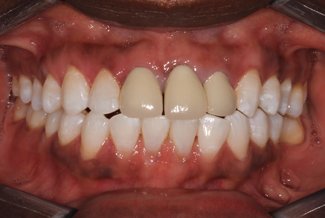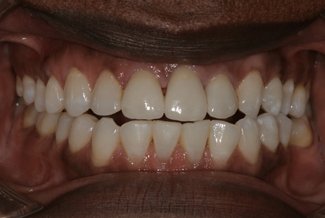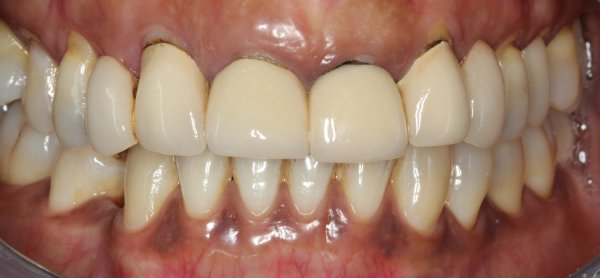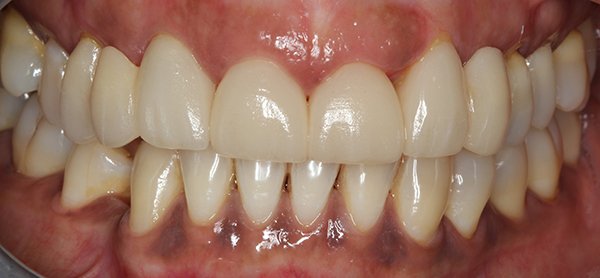What are crowns?
If unsightly teeth are spoiling your smile, crowns can offer a neat, natural-coloured cover up. Sometimes known as ‘caps’, they fit completely over a whole tooth, concealing defects caused by chips, decay, discolouration or large fillings. Made from a variety of materials, including metal, porcelain, resin or ceramic, they can also be used to support a dental bridge or affixed to a dental implant.
- So the crown can be accommodated, we remove a layer of tooth structure but make sure we leave a strong core. The amount of tooth removed depends on the thickness of the crown, which can differ depending on the material used to make it.
- We then take impressions of your teeth and record your shade so the crown can fit perfectly.
- Between appointments, we protect the prepared tooth with a temporary crown.
- When your crown is ready, the temporary crown is removed, and the new permanent one is fixed with strong dental cement.
The best way to care for your crown is to stay on top of your oral hygiene – this means keeping your teeth and gums healthy by brushing with fluoride toothpaste twice a day and flossing between your teeth. It would be best to see your dentist regularly for check-ups so they can keep an eye on your crown and the tooth underneath.
A crown protects a tooth from decay, but not where it meets the gum, and it does not guard against gum disease, so it’s essential to keep the area clean and free from bacteria.
What are bridges?
If you feel embarrassed about gaps in your smile, a natural-looking dental bridge can successfully fill in those unsightly spaces and help restore your confidence. A longer lasting alternative to dentures, dental bridges are an effective way to replace one or more missing teeth. They consist of a false tooth, positioned between two crowns, which slot over the teeth either side of a gap (known as abutment teeth) or they can be held in place by dental implants. They are usually made from porcelain fused to a metal or ceramic base, to offer a blend of strength and good looks.
As well as restoring an incomplete smile, bridges can offer a host of other benefits, including:
- Improving how you eat and speak.
- Enhancing facial contours.
- Distributing the forces in your bite correctly.
- Preventing remaining teeth from moving out of position.
- The abutment teeth are prepared by removing a layer of enamel to ensure sufficient room for the crowns.
- Impressions are taken so the bridge can be tailor-made to fit.
- While the bridge is being made, a temporary bridge may be put in place to protect the sensitive teeth.
- When ready, the bridge is checked and adjusted to ensure it fits perfectly and is finally fixed in place with strong dental cement.
As well as traditional bridges featuring crowns and a false tooth in between, there are cantilever bridges for cases with teeth on only one side of the gap and Maryland-bonded bridges attached to existing teeth with metal or ceramic wings.
Good oral hygiene is essential to ensure the longevity of your bridge. It is necessary to clean under the false tooth and brush and floss regularly.
If bridges are well looked after, including keeping the surrounding teeth healthy so they can continue to provide a solid foundation, they should last for over ten years.
Before

After

Before

After








